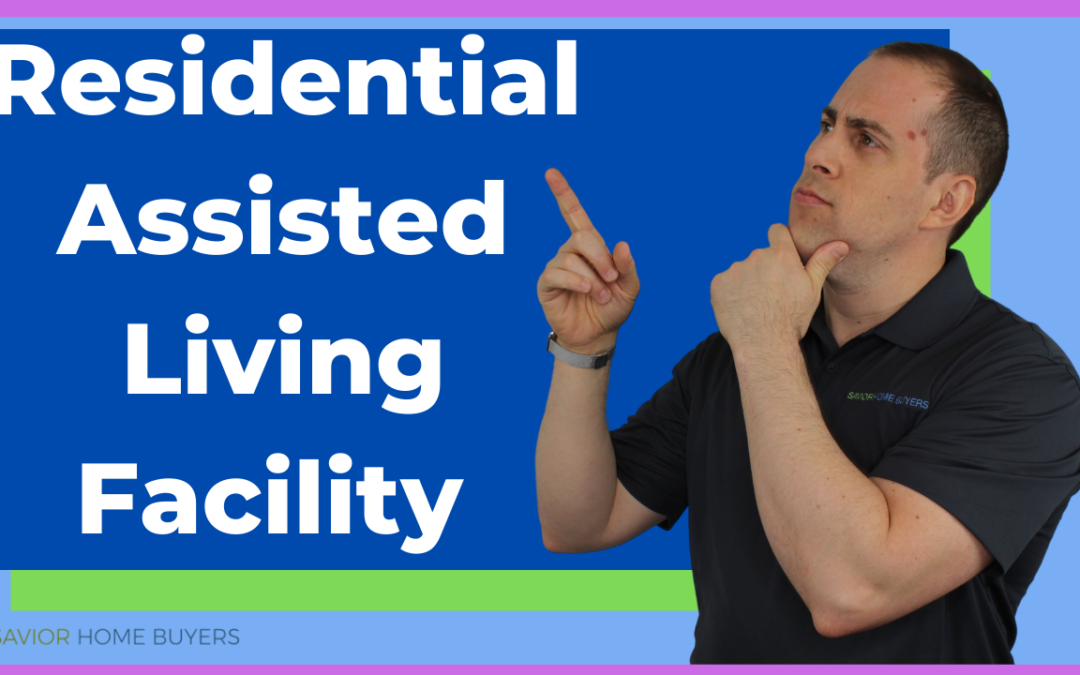One type of Senior housing that does not get talked about as much as it should is residential assisted living.
A residential assisted living facility is basically a house with a small group of Seniors living together that is staffed full-time by trained professionals. Traditionally, people thought the only option that they had when it came to assisted was to live in a big hotel type place but that is certainly not the case any longer. Entrepreneurs and professionals who genuinely care have decided, “Hey, let’s take a house— a large, multi-bedroom house in an existing neighborhood— and let six to ten or even twelve Seniors live in it.”
So, why is this even important? Well, if you have a parent and you are trying to get them in the best facility possible and you only consider one of the big box places, it can lead to pouring money down the drain. This is an even bigger concern if your Senior is not even happy living this type of facility. Especially if there are health concerns, you may be looking for a way to limit unnecessary contact and so larger assisted living facilities are a little bit intimidating, even with all their safety protocols. Being in a smaller facility, you will have a lot more control over who is there and who is not.
As mentioned earlier, residential assisted living facilities are converted single family houses or sometimes they are small buildings that are newly built expressly for this purpose. There are some people building brand new facilities, but even these are quite a bit smaller than normal places that come to mind when you think assisted living. Most facilities have between 6 and 18 seniors per property, which creates a close-knit community feel. The small groups allow the residents to really get to know the other residents and staff and it has a home feeling. That is what I, and many others, love about them.
Another often overlooked benefit is that these facilities are often located in the same kind of neighborhood that the Senior would live in on their own. A Senior who lives just down the street could decide that they do not want to upkeep their own home anymore and they can move into this one, with six or eight other Seniors, and have somebody taking care of them and the property. Additionally, these facilities often have excellent amenities. Some will have chefs and beautiful landscaping.
The one thing some of the larger assisted living facilities can boast over a residential assisted living facility is that they have more resources to bring in more entertainment. A larger facility may also be ideal if you wanted to socialize with a lot more than 6 or 18 people— say, you wanted 100 people to associate with regularly. However, normally when people transition to assisted living, they need quite a bit of help. While Seniors in assisted living are still trying to be as independent as possible, most are not looking to hang out with 100 people.
One of the other big benefits is the excellent caregiver to resident ratio. Many larger facilities will claim to have a great ratio, something along the lines of ten to one, meaning that for every ten residents there is one professional caregiver. But, they sometimes include the chef and the gardener and the maintenance people in this count. If you take this type of staff out, it can be more like twenty to one or even fifty to one. Then the ratio changes at night, when fewer professional staff are on site. These ratios are not ideal for any Senior who needs regular assistance. Residential assisted living facilities will always have a professional caregiver on site, and even if it is just one person at night, the ratio never goes below six to one or ten to one, and will often be considerably higher.
The average cost across the nation is about $4,000. Residential assisted living facilities tend to be about the same price as, sometimes less than, the larger big box facilities. As always, there are ways to lower the cost. The easiest way is to live in a shared room. That will always be cheaper than a private room. You could also choose a facility with fewer amenities.
Residential assisted living is an excellent Senior housing option that is often overlooked. If this is an option that interests you and your family but you are unsure where to begin your search, reach out to our office and we can connect you with the resources you need to make an educated, informed decision.


Recent Comments